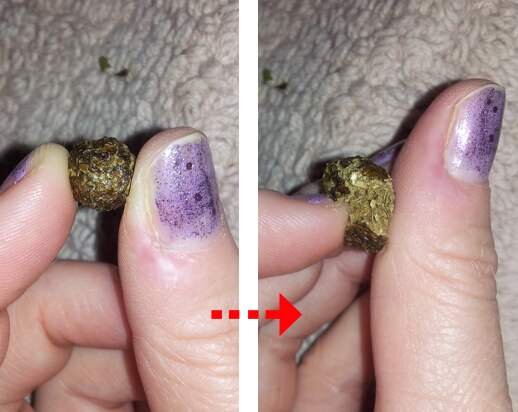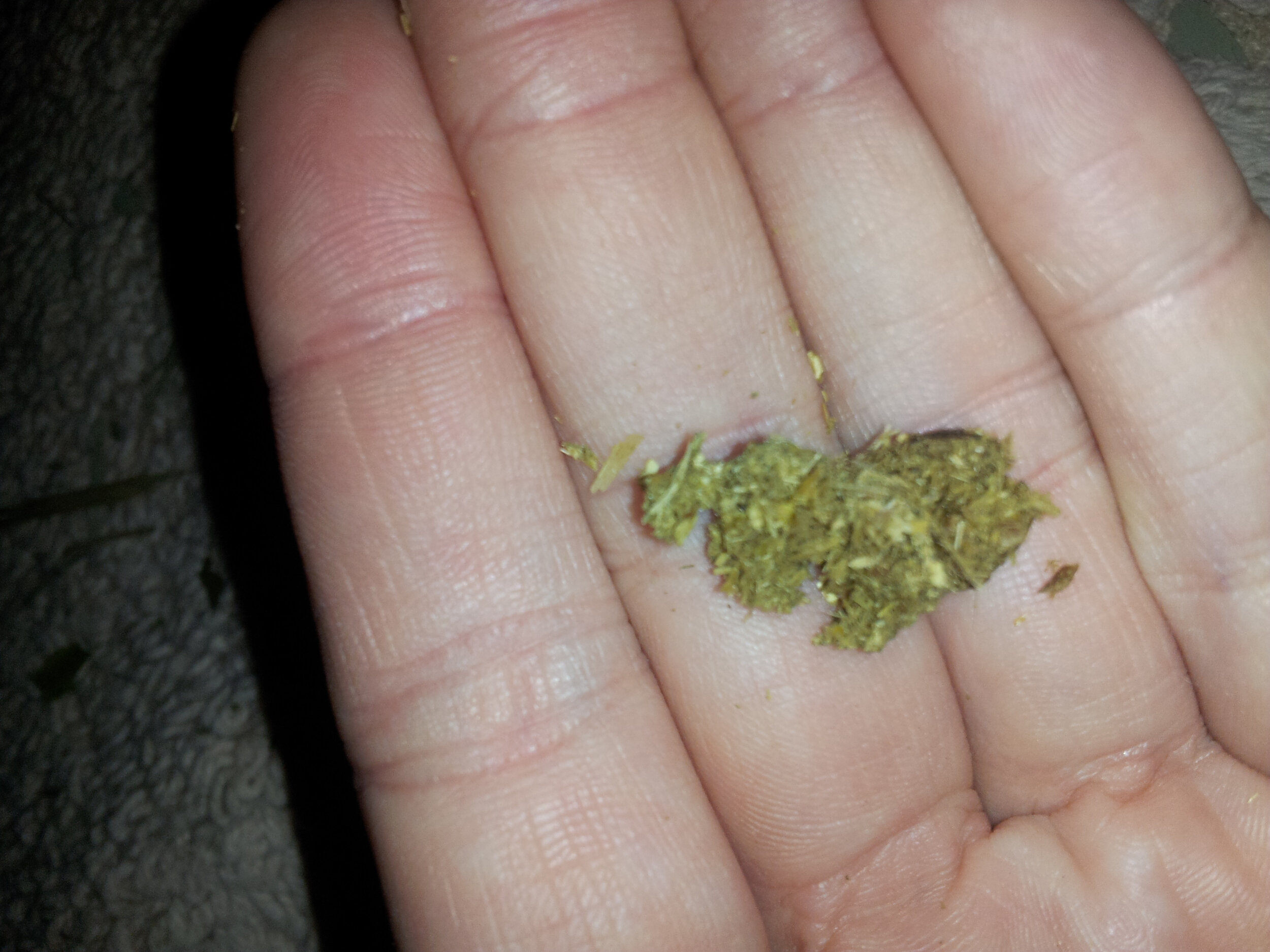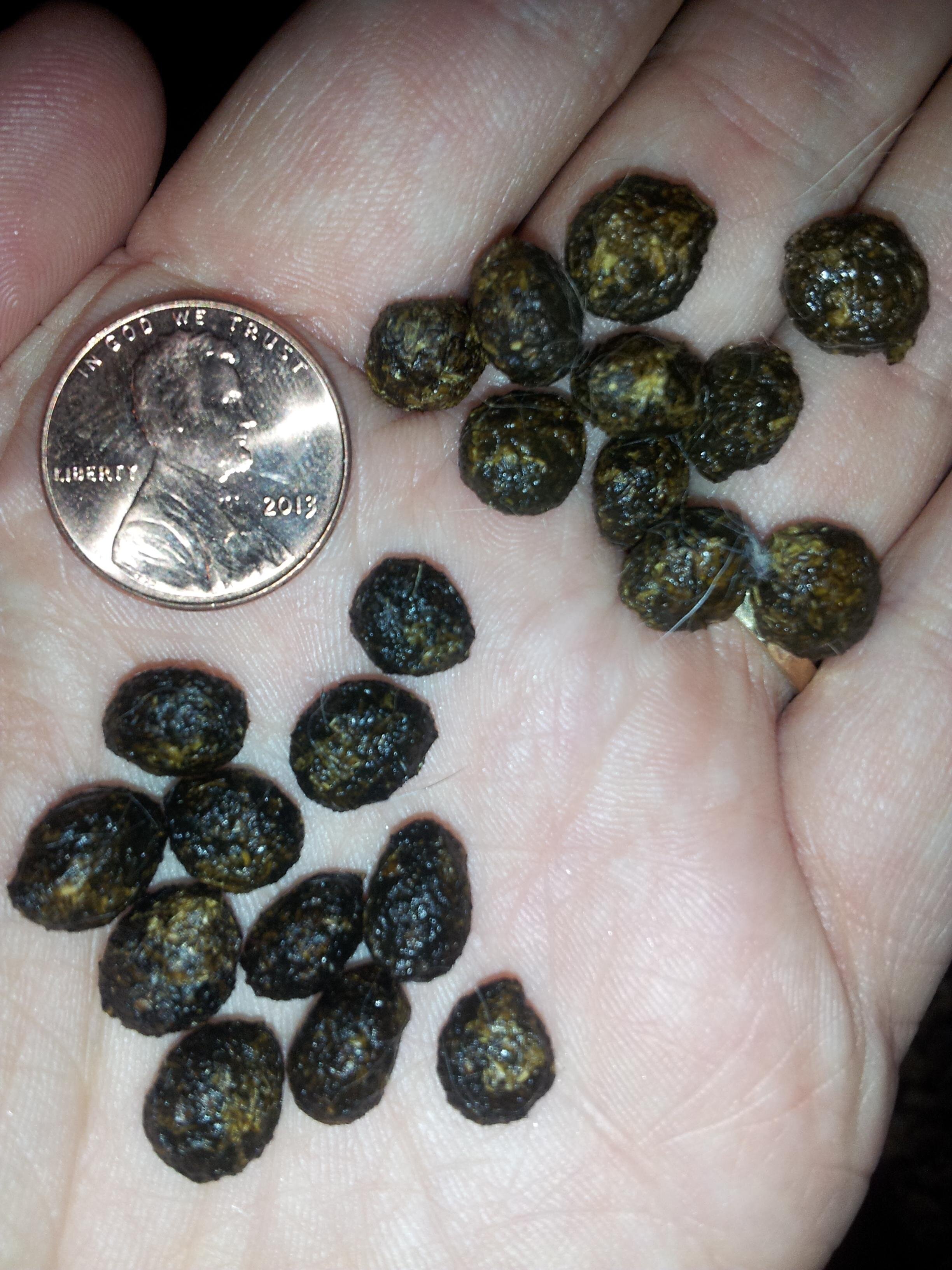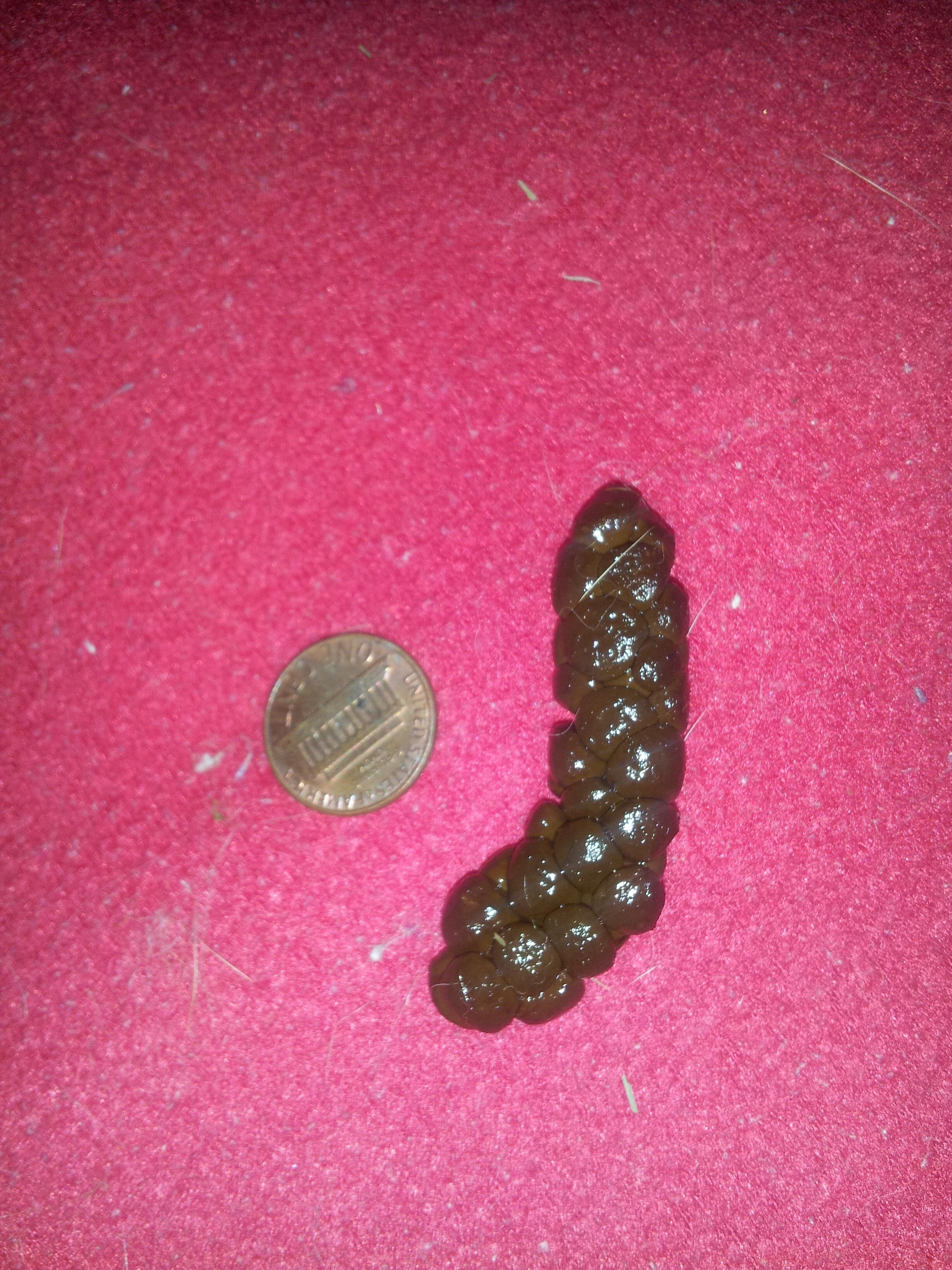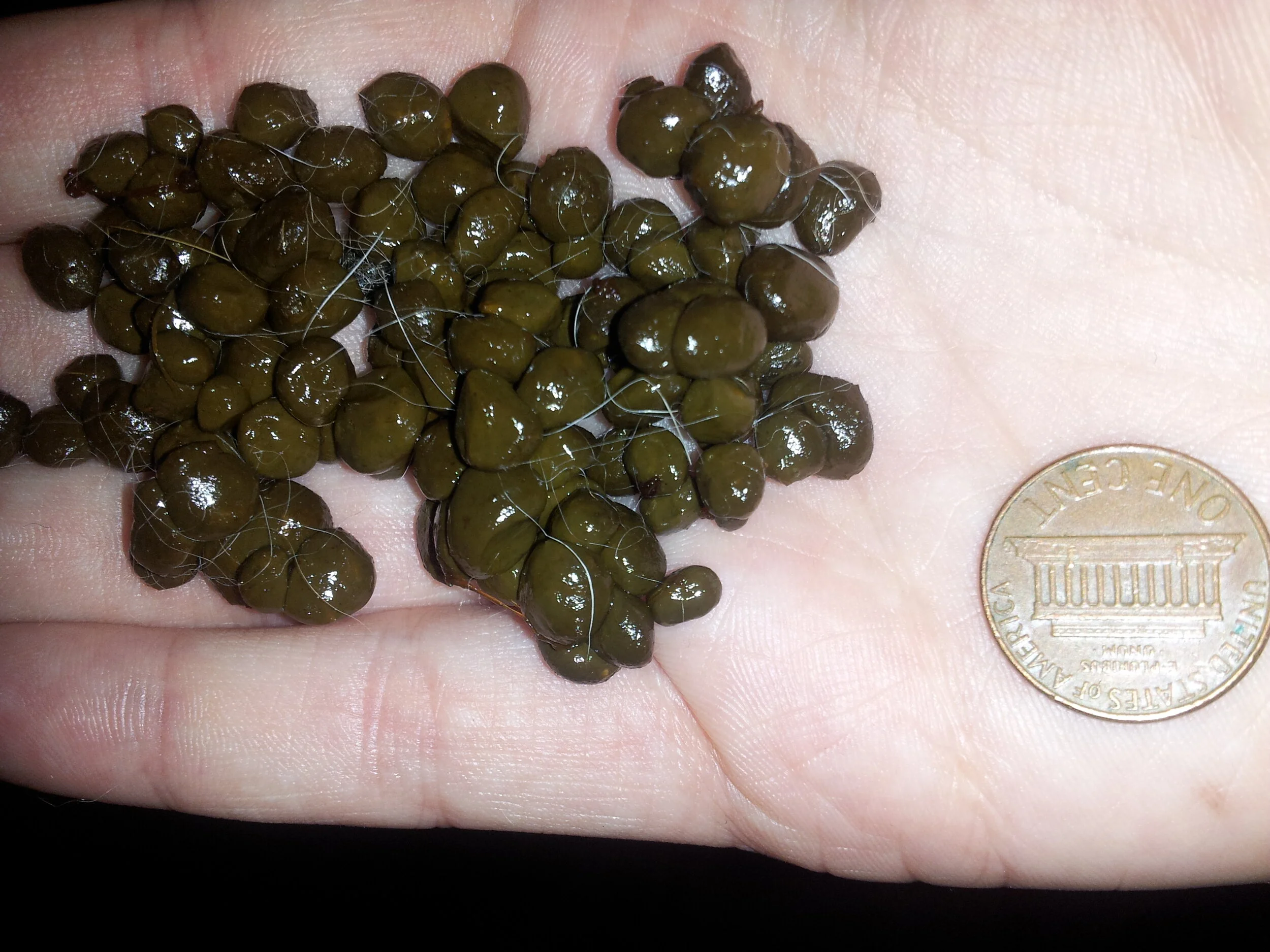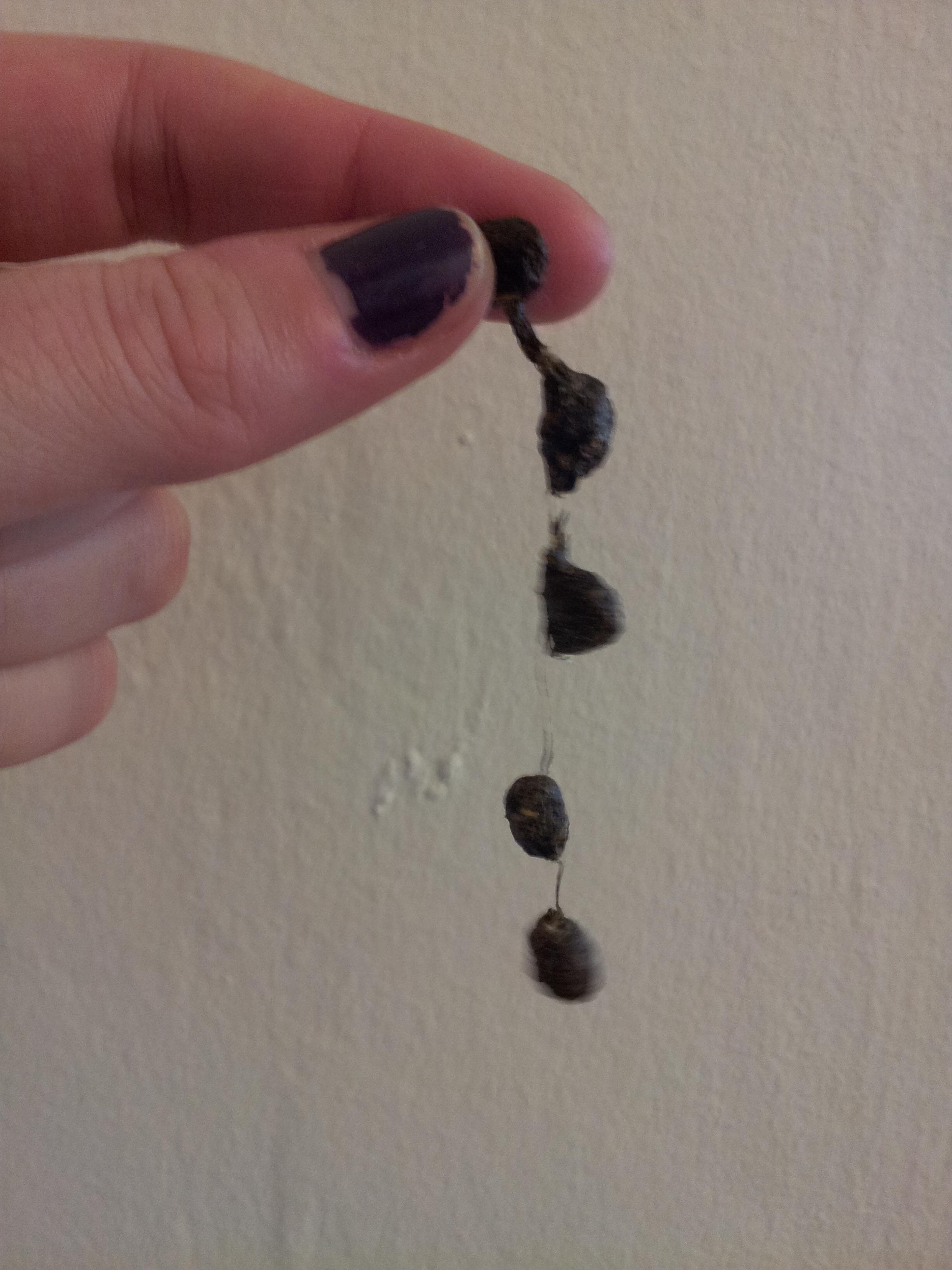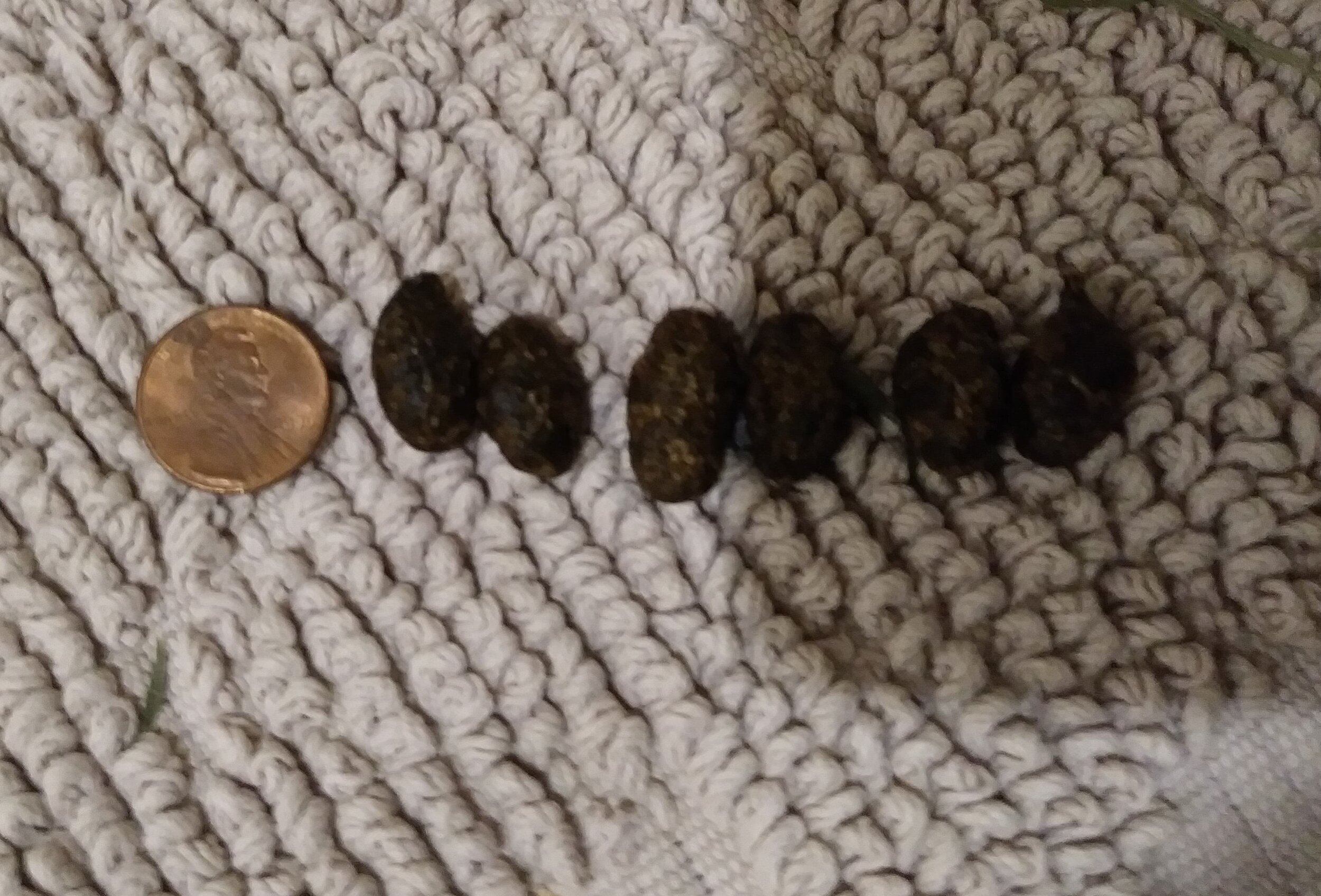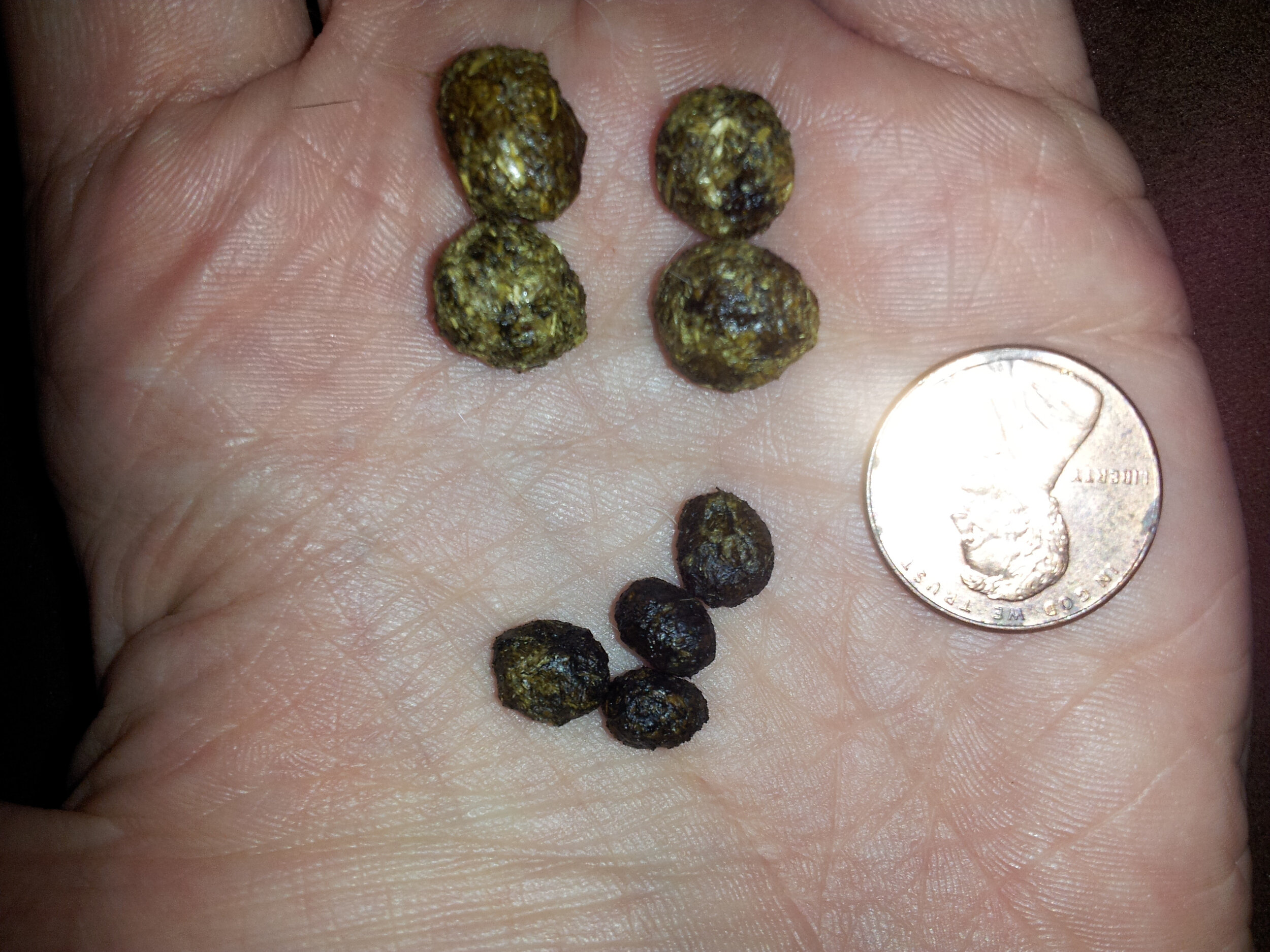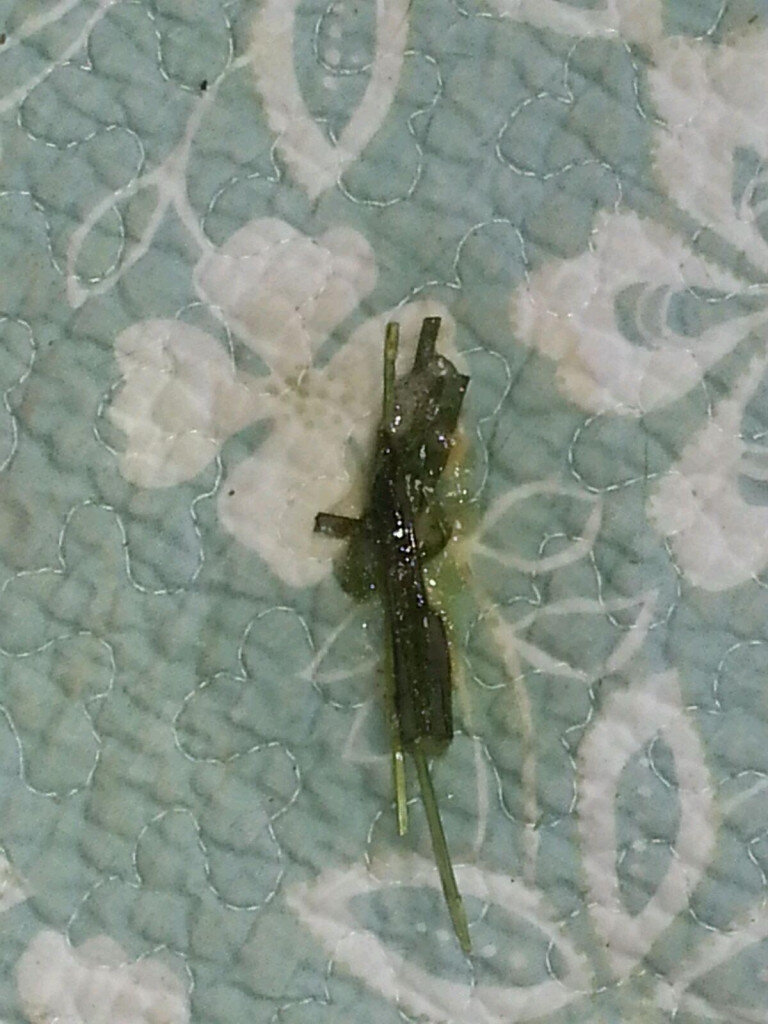Guide to Bunny Poops
A big thank-you to Christie Taylor for sharing this article with BUNS. Christine is an Educator with the House Rabbit Society and has a PhD in Biochemistry and Molecular Biology from the University of Miami Leonard M. Miller School of Medicine. You can find her on twitter @graamhoek.
This is a short guide to bunny poops. They can communicate a lot of data via poop-o-gram if you're paying attention. Always consult your vet before changing your rabbit's diet. If your bunny hasn't pooped in the last 24 hours, please take your bunny to a veterinarian as soon as possible. Thanks to everyone who has helped make this guide better!
Bunny poops
Average sized bunnies will make 200-300 poops per day. They should be uniform in size and shape which means rounded and pea to garbanzo sized. The size of your bunny won't always predict the size of their poops.
Bunny poops
Healthy Poops
They should also be friable. Friable means that they'll have a stable form, but if you apply gentle pressure and roll them between your fingers, they'll fall apart into something resembling sawdust as in the photo. Bunny poops can get pretty hard as they dry out, so test a fresh one if possible.
Healthy Poops
Inside Healthy Poops
Once you've tested the friability of a poop, inside you should find lots of chewed up hay. Testing them regularly will give you a baseline for what's normal for your bunny.
Inside Healthy Poops
Color
Darker, more moist poops may be a sign that your bunny is getting too much protein in their diet. The poops in the lower left were from a bunny before a switch from orchard grass (a 'richer' hay) to timothy hay (upper right) after only 24 hours. After 48 hours the poops contained even more visible chewed up hay on their surface and continued to become lighter brown and larger.
Color
Color
Cecotropes
These poops are completely normal, usually bunnies eat them to ensure that they get enough protein and B vitamins in their diet. Sometimes bunnies will make more than normal when they're stressed or are getting too much sugar in their diet. This is okay as long as the bunny doesn't get a messy bottom (by sitting on the cecos) and it doesn't happen all the time. If it does, it might be time for a change of diet.
Cecotropes
Sometimes cecotropes' berry-like structure can be disrupted into individual pieces by your bunny. You'll know them by their squishy texture, glossy surface (the white fibers are bunny hair) and odor which will intensify if the membranous outer coating is disrupted.
Cecotropes
Linked by Hair
These poops are linked together by shed hair. This isn't a problem - the spacing suggests that the bunny's gut is working normally and the hair is getting pushed through with all the other fiber. I would suggest giving the bunny more fresh greens (in addition to their free access to hay) to keep things hydrated and moving and brush them more regularly, but otherwise this bunny seems healthy.
Linked by Hair
Doubles and Singles
The 'doubles' at the top of this image occur when a bunny's gut slows for whatever reason and 2 pills collide during their formation creating a double poop. These can be caused by stress or advanced age. If your bunny starts making more then two or three doubles (or triples) per day, it might be time to ask your vet about a stimulant to get your bunny's gut back to a normal pace. Their pills should be uniform in size and shape like those at the bottom of the image.
Doubles and Singles
Large Egg Shaped Poops
These are not to be confused with double (or triple) poops or large normal poops. Large egg shaped poops can result from megacolon, This is a rare occurrence in rabbits that typically arises from genetics (En En) or occasionally after trauma. This condition is uncommon, but if you suspect your rabbit has it you should consult a specialist about appropriate long term care.
Large Egg Shaped Poops
Small Round Poops
Poops can become small for any number of reasons: stress is the most common one for small round poops. A strange noise or a stressful experience can cause your bunny's poops to be smaller temporarily. They should go back to normal within a few hours. Chronically small poops can indicate chronic pain, narrowing of the intestine or a partial blockage and a vet visit is an order.
Small Round Poops
Small Misshapen Poops
Small misshapen poops can mean your bunny isn't eating enough. This can happen after surgery, if your bunny's teeth are hurting, or any other reason your bunny might not want to eat. Post surgery, this is a good sign - your bunny's digestive tract is working, there just isn't a lot of food in there. Otherwise, your bunny's poops are telling you to go see a vet.
Small Misshapen Poops
Mucous Covered Poops
Mucous in poops is common after a course of antibiotics, but can also be caused by anything that might irritate the intestinal lining. In this case, the bunny ate her first piece of parsley ever with such gusto that she forgot to chew. Similarly other large or irritating masses might be encased in mucous. (Thanks to DM of HRoMaine for the image.)
Mucous Covered Poops
Mucous In Poops
Mucous might be present for parasites or other very serious disorders like cecal impaction. A consult with a veterinarian is advised if you observe thick stringy mucous in your rabbit's poops, especially if the mucous is persistent.
Mucous In Poops
Cecal Dysbiosis
Cecal dysbiosis is poop that isn't completely formed and is doughy or pasty and is usually quite smelly. It can be caused by stress, illness or a diet too rich in starch, fat or sugar. This shouldn't be confused with normal cecotropes that have been smooshed by your rabbit's feet or bottom. If you're not sure, you may have to poke around to see if the mess comes apart in layers (cecotope) or if it's completely formless (cecal dysbiosis). The alternative is to watch for the next batch. You should monitor any bunny with dysbiosis for signs of illness. Elderly bunnies might have dysbiosis just from achy joints and ageing digestive tracts. You can take their temperature to rule out an infection. If the dysbiosis persists or isn't reduced by eliminating treats or stress, schedule a vet visit. (Thanks to AO for the image.)
Cecal Dysbiosis
Diarrhea
True diarrhea is very rare in rabbits and is cause for alarm. Rabbits with diarrhea may be infected with deadly parasites or possibly have been exposed to poisons. Very young rabbits with watery runny stools may have been weaned before they're ready. Regardless of the age of any rabbit with diarrhea, getting them to a vet as soon as possible should be first priority. If it's an option, bring some of the runny stool for your vet to examine. (Thanks to AO for the image.)
Diarrhea
Should I be worried about getting sick from my rabbit's poop?
You've probably noticed that I'm cavalier about touching my bunnies' poop, even in cases where parasites might be involved. Rabbits' immune systems are weak compared to those of healthy humans. Humans rarely get sick from rabbit pathogens unless they're severely immunocompromised.
Should I be worried about getting sick from my rabbit's poop?
How should I clean up after my bunny?
Because rabbits are sensitive to chemicals, cleaning up after them might seem tricky. The good news is that plain soap (not antibacterial), bleach (diluted to 1-10% in water), vinegar and sunshine (heat, desiccation and UV radiation) are your best bets in terms of eradicating the vast majority of stains, dirt and pathogens (that might infect you or your rabbit) WITHOUT risking harm to your family.
How should I clean up after my bunny?


